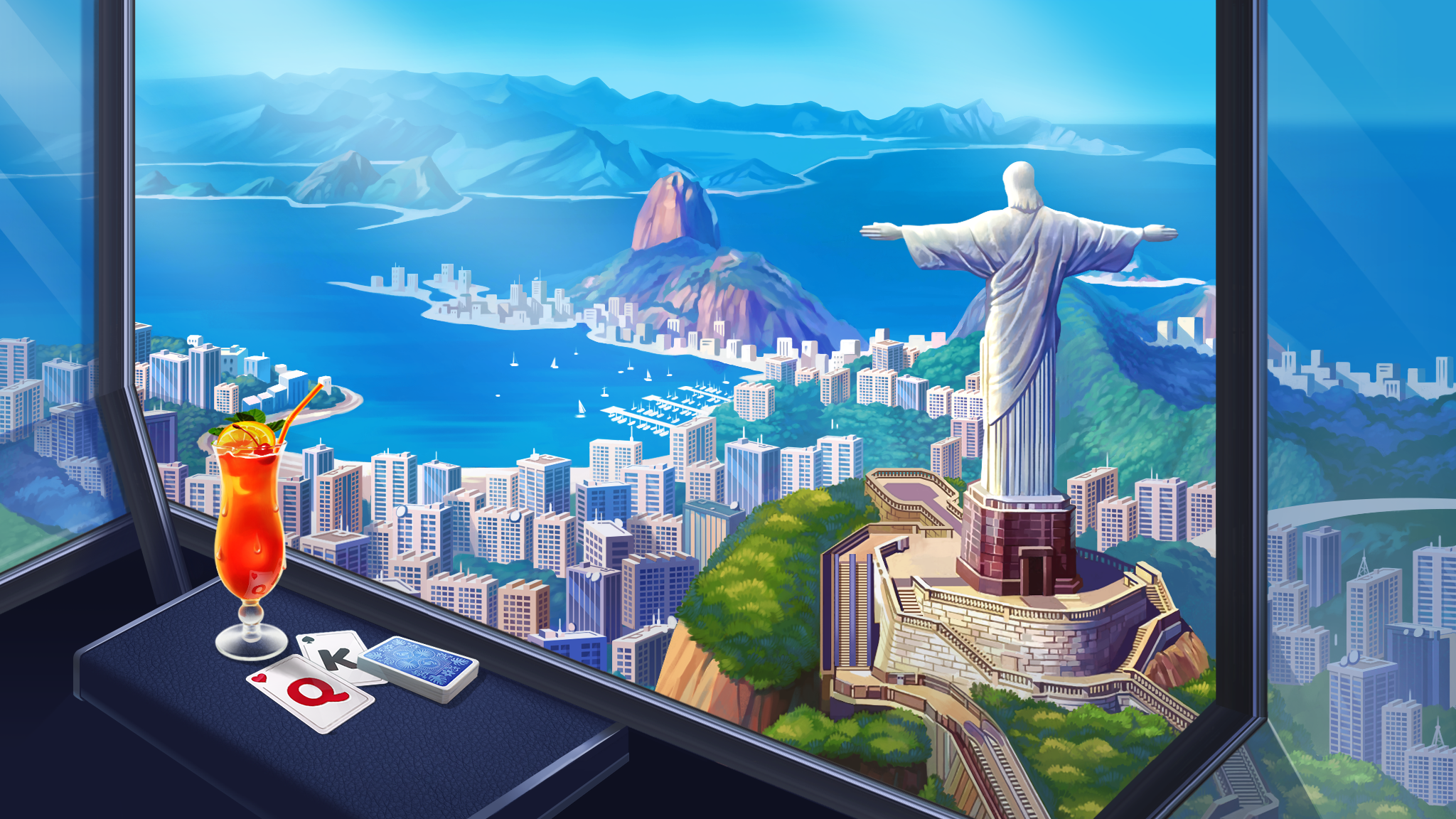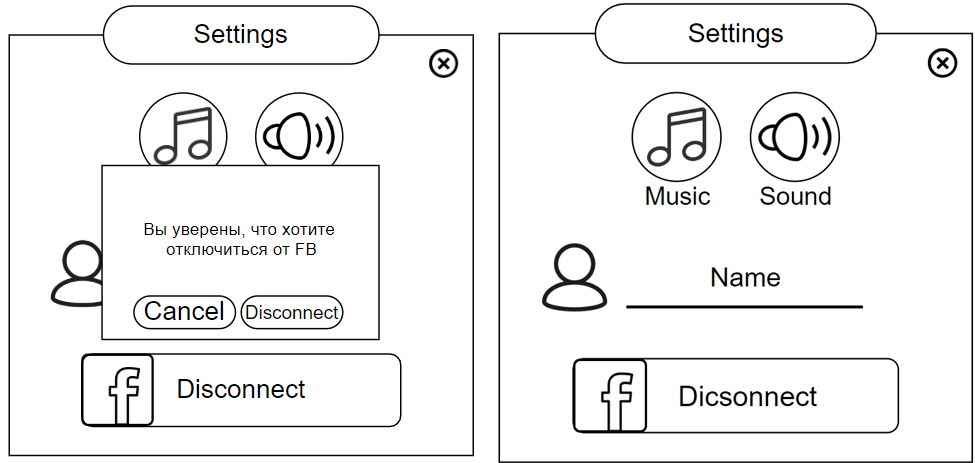With a look at what principles a game designer should adhere to in his work, — in his column on App2Top.ru shared Eduard Kumykov, the lead game designer of the Solitaire Cruise project from Belka Games (according to App Annie, she is now among the top 20 highest-grossing publishers in EMEA).
Eduard Kumykov
Game designers are different.
In many companies, they can do documentation writing, balancing, level design, task allocation and much more at once.
This type of activity can be called “general game design”. We will talk about how to find new and improve existing approaches in the work of such a specialist in this article.
I. Play
The game designer gets the most experience when analyzing other games.
Yes, obviously. Yes, they talk about it all the time. But still, analysis is rarely done. Moreover, many do not attach due importance to it.
I will focus on how to conduct the analysis correctly a little later in a separate chapter. Now I want to note: in order to analyze, you need to play.
How exactly?
a) Play a lot
To check if you are doing enough of this, list the games you have played recently. For example, I try to watch one new game a day and look forward to the release Thursdays.
I’ve watched 114 games in 3 months
b) Play different games
Play as many different games as possible. This is the most valuable skill with which you will gain the most experience.
Many game designers believe that they view enough projects, but in fact they regularly go to one or two favorite games, from where they draw experience. Or they are completely limited to watching a couple of sensational novelties per month.
Playing a large number of games, you will see a lot of solutions for game design, animation, monetization, and more.
When I joined the Solitaire Cruise project, I downloaded and started playing all the solitaire games from the world’s top 1000 grossing. Now I continue to view them, as well as regularly download all the games that are somehow similar to our game.
The tapeworms that I regularly watch are highlighted in orange
c) Play your game at all stages of development
Don’t forget to play your own game. This also sounds obvious, but I know that not all game designers do this.
Review your game as often as possible. Run it at least a couple of times a day.
When each update is released, log in as a regular player (and not from the developer profile). This allows you to see how new mechanics affect progress and those mechanics that were already in the game.
But at the same time, do not forget to view the dev version to be aware of the progress, ready-to-launch mechanics and content updates.
II. Analyze
At conferences or in communication with other companies, everyone wants to hear cool cases, find out what solutions need to be applied when developing a particular game. But sometimes it’s enough to just take and analyze the desired game, try to understand what works in it, what players like.
How to carry out the analysis?
There are several approaches here.
a) Conduct an analysis of the games of interest
When watching games, you just remember other people’s approaches and keep them in your head. It’s important, but it’s not enough. Often they need to be sorted out in a particular document.
Why is it necessary? The fact is that this:
- allows you to share the result and experience with colleagues;
When describing the analysis of the game in the document, you can start from your thoughts about the work of some mechanics. In the future, colleagues can refute them or offer their ideas.
- allows you to re-refer to the document at any time and remember how this or that mechanics works;
If a long enough time passes and the developer releases a lot of updates for the game, then you can compare the changes and think about the feasibility of adding them to your game.
- stimulates the birth of new ideas;
This contributes to a greater understanding of how mechanics work in the context of the entire game.
Remember the list of games from the image above?
For 20 of them (or so) I have made complete decontracts.
We usually analyze the following points:
- the plot of the game;
- main cycle;
- monetization points;
- points with ads;
- live-ops events;
- I’m a mechanic;
- we just highlight ideas that can be adopted.
It can also be useful to form a template with a list of what you should pay attention to in games, in addition to basic things like earning a project.
b) Fix ideas
When viewing other people’s games and analyzing them, game designers always have their own ideas. For example, how one or another approach can be applied at home or how certain mechanics can be successfully combined. All this needs to be fixed. Otherwise, it’s easy to forget.
Some get a special notebook for this, others a separate document. I fix the ideas in the table. I add explanations or screenshots there so as not to forget what I meant.
This is how my table looks like
If you are seriously planning to engage in game design, then the ideas that you save will become a great help over time.
When writing this article, I calculated that every month I write down about 20-30 different ideas. An excellent “piggy bank” of future solutions.
Where else to get ideas from?
You can conduct research on various topics. For example, it was Valentine’s Day recently. In connection with it, we studied how developers prepare for this holiday, what they add to their games. In parallel, we tracked the dynamics of revenue of third-party games for the selected period using analytical services. This allowed us to collect a huge database of ideas for future holidays.
Our projects in the feature on iOS
Also, when looking for new ideas, you can always turn to the team for help by arranging a “brainstorming session”.
Sometimes colleagues can come to you themselves with some idea (this happens quite often during development).
Another source of ideas in Belka Games is “game design breakfasts”. These are weekly meetings that we hold in the morning during non-working hours. During such breakfasts, we communicate on a variety of topics: from mobile development trends and narrative techniques to player ratings and retention. In the process of informal communication with colleagues, ideas also sometimes arise.
The main thing is not to forget to write them down.
c) Try on the mechanics
We have just sorted out a lot of sources of ideas. There is at least one more. It is associated with analysis and it can be called stimulation.
This incentive tool is the “shifting” of someone else’s mechanics into your own game. This also applies to those mechanics that at first glance are completely alien to your project.
When viewing any mechanics, ask yourself: is it possible to apply it within the framework of other mechanics, is it possible to make it an aspect of another element where it can “stand up”?
For example, the picture just above shows the implementation of the “wheel of fortune” mechanics, within which you can bet on cells.
This is a fairly rare and complex mechanic. Why not write it down if you haven’t thought about it before? In addition, there is something to think about. For example, maybe it’s worth:
- give the player the opportunity to choose prizes for the cells before the spin?
- or to make a competition between players on the number of completed spins?
III. Conduct your work competently
Playing and analyzing are important aspects of a game designer’s work. However, it is not limited to this. I will not dwell on its specifics in detail in this article, but I will note a number of working moments that simplify work and interaction with colleagues.
a) Prioritize
The ideas of mechanics and design approaches are applied not only at the stage of creating a game. Many of them are resorted to already at the moment when the game is at the stage of operation.
Anyway, in both cases, you can’t just take and put on the programmer a list of invented or borrowed features for implementation. That’s not how it works.
Ideas should have a priority level. Some ideas are fundamentally important for core gameplay, some others solve a certain task at the level of monetization or retention, others should be added just for fun.
At the stage of concept preparation, priority helps to understand whether the project is workable, being deprived of most secondary aspects. As for operating, here, thanks to working with priorities, the team is always focused on the most urgent tasks.
Analytics helps in determining the priority. It allows you to understand how this or that new feature has affected the metrics of the product. At Belka Games, for example, we first test a version with a new feature on a limited audience. It turns out a kind of softlonch. Then we analyze the results and think whether it is worth finalizing the functionality or work on it should be stopped.
b) Prepare UI layouts
At the stage of preparing the concept of the game or while working on a particular mechanic, it is very important not only to imagine how the user will interact with the game.
Therefore, one of the important tasks of a game designer is to create interface layouts. We are not talking about beautiful and detailed menus — this is already the work of an artist, but about schematic sketches that are easy to make in any graphic editor.
Thanks to the preparation of layouts:
- it is easier to convey your theses to the team;
- the work of the interface artist is simplified;
- the game designer himself becomes aware of the weaknesses in his concept;
- you can throw in several variants of UI options and immediately conduct A/B tests.
c) Create a single database of interface elements
Storing all the diagrams and pictures for the project in one place greatly simplifies working with graphics on the project (including UI layouts). Important: it should be a single pool for all game designers working on the game.
Thanks to this, it becomes possible to reuse any previously created elements, which will significantly speed up work on other schemes and graphs in the future (both yours and other game designers, because both windows and elements can be duplicated in projects).
Also, when using the same elements, the documentation on the game becomes uniform and more understandable for all participants in the process.
By the way, there was a case recently when an employee went on vacation. At the same time, it was necessary to change a number of documents and diagrams describing the operation of the window for which he was responsible. Having a common base from which we work together allowed me to do it myself. I just went into the template and changed what I needed.
If an employee had drawn this diagram somewhere at home, then I would not have had the opportunity to change everything quickly. I would have to re-draw everything.
d) Make a clear balance
The balance tables that you create should be readable and understandable. This is very important, because people from completely different departments can work with them.
At the same time, it is not necessary to immediately make the table readable: when developing it, you can first calculate everything so that it is clear to you, and then arrange it beautifully so that it becomes clear to others.
Yes, I use this approach not only when calculating and registering the balance, but also when writing documentation or graphics layouts.
And then I’ll give you a couple more important tips on balance.
First, make sure that the balance model in the tables completely coincides with the balance in the game itself. It is also very desirable to be able to use scripts to calculate it. The fact is that there is not always a way to quickly check and fix something in the game. But it can be done in advance and quickly in the tables.
Secondly, try to use data from analytics more often when calculating the balance, and not invent figures out of your head.
Conclusion
There are many more aspects of game design that are worth highlighting, pitfalls that you can sit on. In this article I have tried to cover the most basic points.
I learned a lot of what was discussed while working at Belka Games, but I formed the main approach when I was just starting my career as a game designer.
I will be glad to have comments and questions.










